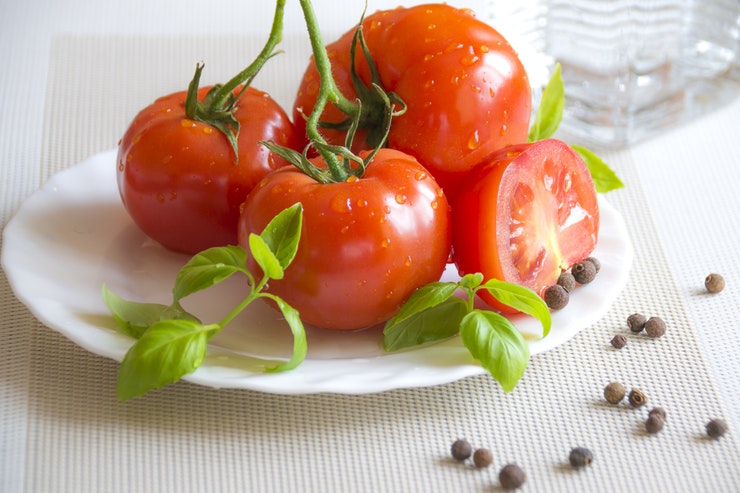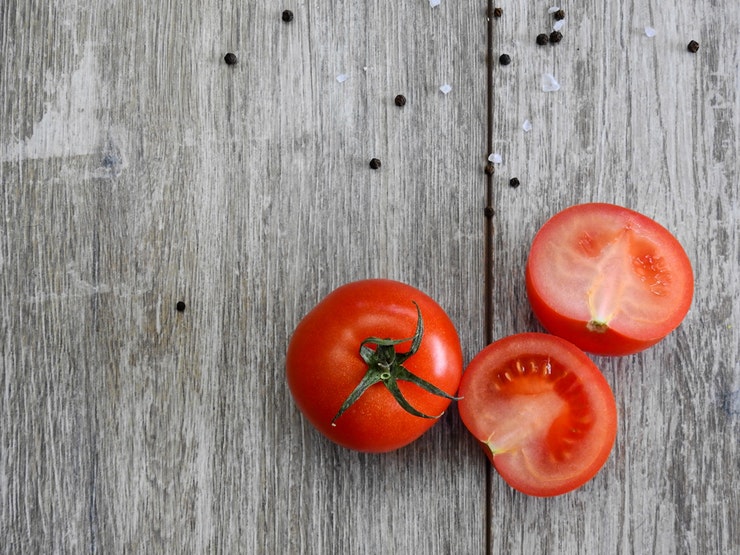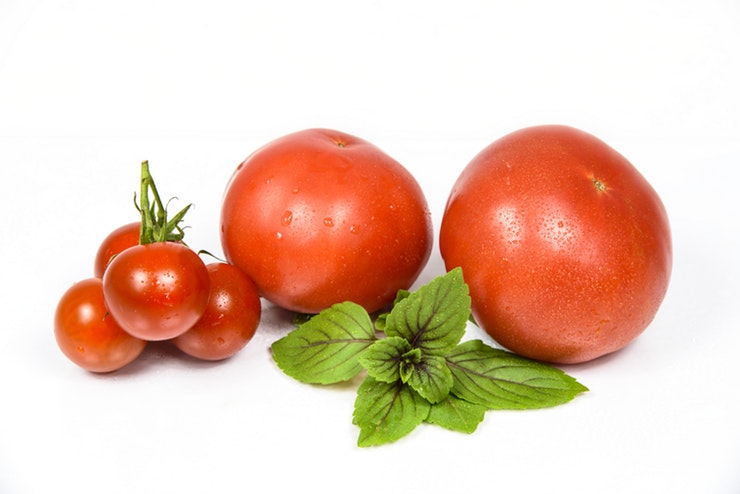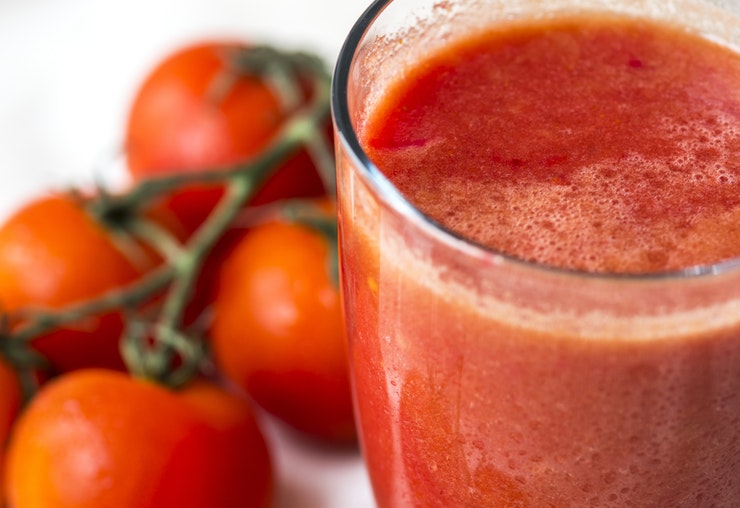

pexels.com
Tomatoes are one of the most well-rounded fruits out there, for lots of reasons. For one, they’re round. But obvious and groan-worthy pun aside, tomatoes are delicious, nutritious, and plentiful. Their antioxidant content helps ward off all manner of physical ills, while their vitamins and minerals support crucial functions of the human body.
Tomatoes can be eaten sliced, diced, cooked, or raw – even unripe, in the form of green tomatoes. They come standard on burgers and sandwiches, are delicious atop salads, and form the base of many different sauces. There are hundreds of different varieties of tomato, including lots of “heirloom” varieties that have been open pollinated and passed down through many generations.
Suffice it to say, tomatoes are a smart addition to a healthy diet. But what would happen if you ate tomatoes every day for a month? Unless you have an allergy or sensitivity to them, it’s all good news. Stick with us to find out how much you can improve your health with tomatoes in just 30 days.

pexels.com
Nutrition in TomatoesBefore we start, here is a quick rundown of the nutrition to be found in tomatoes. They contain vitamins A, E, K, B1,B3, B5, B6, B7 and a bunch of vitamin C. Some of the important minerals in tomatoes include folate, iron, potassium, magnesium, chromium, choline, zinc and phosphorous. Lycopene is the main antioxidant found in tomatoes; it is what gives the fruit its red color. But tomatoes also contain the antioxidants beta-carotene, naringenin, and chlorogenic acid.
This level of nutrition is pretty impressive for a fruit that is comprised of 95% water! The other 5% is mostly fiber and carbs. A medium-sized tomato has just 22 calories, so it definitely won’t derail your diet. Let’s find out what all that good stuff can do for your body.

pexels.com
Cardiovascular HealthThe effect of tomatoes on heart and cardiovascular health has been well studied. The fiber, vitamin C, potassium, and choline all help support a healthy heart. Potassium in particular reduces blood pressure and therefore eases strain on the heart.
The high lycopene content makes tomatoes especially good at reducing the risk of stroke, which occurs when blood flow to a portion of the brain is cut off. All in all, tomatoes are an excellent choice to help your heart keep circulating blood to all parts of your body without strain.

pexels.com
Reduced Risk of DiabetesTomatoes are a low GI and low carb food, meaning that they won’t spike blood sugar. Because of that, tomatoes are included on most diabetic diets. The antioxidant lycopene is thought to help restore biochemical balance in people with diabetics, and the fiber content improves blood sugar levels for people with both type 1 and type 2 diabetes.
We can reasonably assume from these findings that regular consumption of tomatoes is also good for reducing the risk of developing diabetes in healthy people. In the case of type 2 diabetes, an unhealthy diet (along with a sedentary lifestyle) is the biggest risk factor.

pexels.com
Bone HealthIt’s lycopene for the win once again! This antioxidant strengthens bones by helping to maintain a healthy ratio of calcium in the body. Lycopene also reduces formation and activity of osteoclasts, which are the cells responsible for bone loss. It is therefore especially good for post-menopausal women in danger of developing osteoporosis.
But tomatoes are not just for older people – studies have long shown that people who eat more tomatoes and tomato products have a lower bone fracture rate than those who don’t eat many tomato products at all. Now you know what to eat before going skiing.

pexels.com
Cancer PreventionAny food high in antioxidants can protect the body against cancer in a few ways. First, antioxidants rid the body of carcinogens, toxins, and free-radicals, all of which can allow cancer to take root. The antioxidants in tomatoes are also great at reducing oxidative stress and chronic inflammation, conditions that are ripe for the development of cancer cells.
The lycopene in tomatoes seems especially protective against lung and prostate cancers.

pexels.com
Healthy MindOxidative stress occurs when there is an imbalance between free radicals and antioxidants in the body. When this imbalance is ongoing, free radicals begin to damage fatty tissue, proteins, and DNA, all of which makes the brain particularly susceptible.
Studies on the connection between oxidative stress and neurodegenerative diseases is ongoing, but traditional treatment of ailments like Alzheimer’s and Parkinson’s always recommend antioxidant treatment. Along with brain training exercises that keep your gray matter fit, eating tomatoes can deliver important antioxidants needed to neutralize the extra free radicals before they can do damage.

pexels.com
Healthy Skin & HairWhile tomatoes do great work inside your body, they can also offer serious benefits to your external appearance in the form of healthy hair and skin. It starts with the vitamins A, B, C, E, and K, which stimulate healthy hair growth and give skin its firmness and elasticity. Tomatoes are also helpful when applied topically in the form of a hair rinse or facial scrub.
People are using tomato as an ingredient in products that purport to fight hair loss, condition hair, and clear hair of environmental stains such as those caused by chlorine. Tomato might also treat dandruff and relieve itchy scalp. In terms of skin, tomato is thought to remove dead skin cells and provide a smooth, glowing appearance. It is a gentle astringent that is perfect for combination skin. And the lycopene in tomatoes can even protect against sunburn, but we don’t recommend skipping the sunscreen all together.

pexels.com
It seems that tomatoes might rightfully claim the title of “superfood,” given all the incredible health benefits they offer. Eat tomatoes raw to take advantage of the overall nutritional profile. Cooking does reduce the level of some vitamins, especially vitamin C. However, when it comes to lycopene, applying heat actually makes the antioxidant more available for absorption by the body.
It doesn’t take much – just two tablespoons of tomato puree can provide more than your RDA of lycopene, and that can easily be integrated into all kinds of meals. But we recommend mixing it up between cooked and raw tomato to really see all the great benefits. What are you waiting for? “Ketchup” with the trend of tomato love. (Okay, we’re done.)









